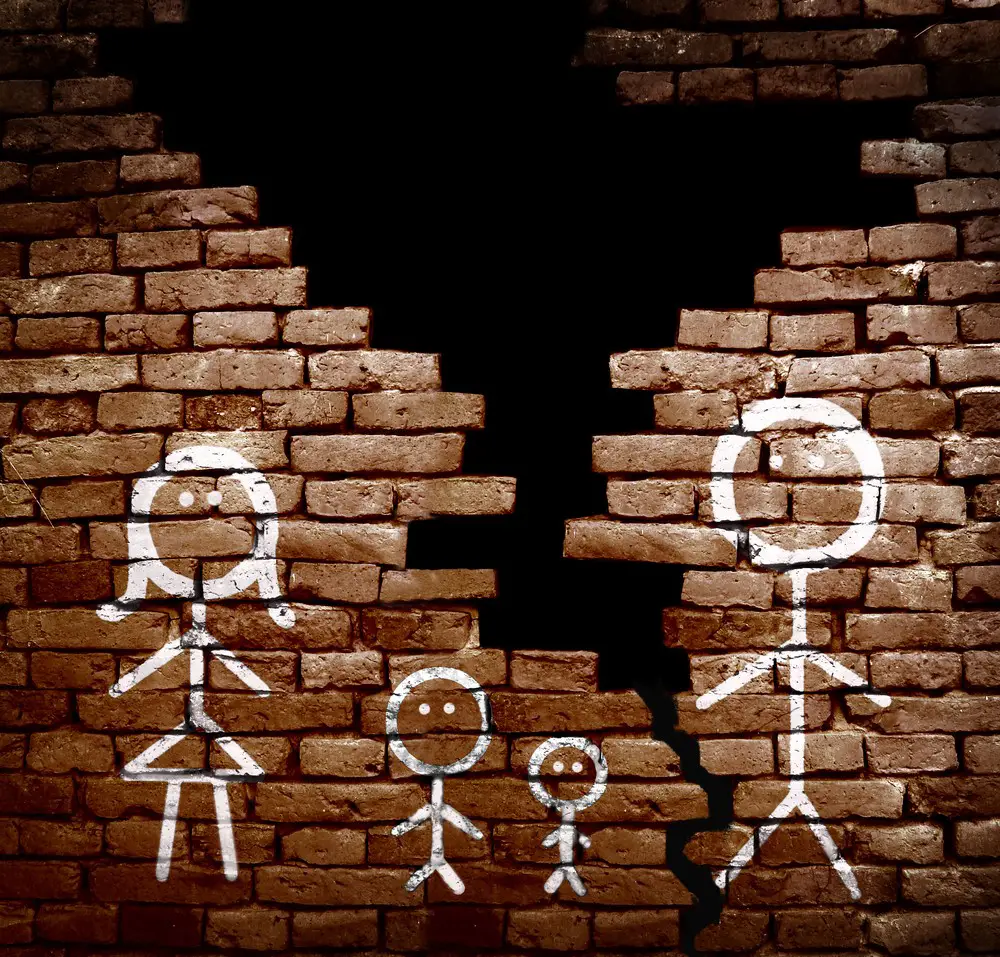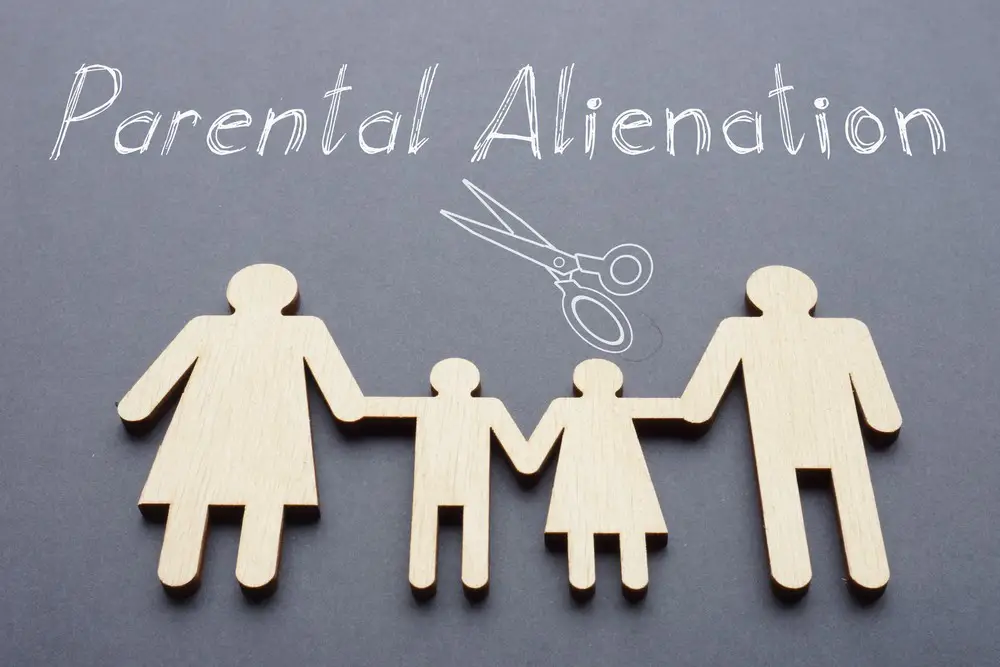As a BetterHelp affiliate, we receive compensation from BetterHelp if you purchase products or services through the links provided
Reunification therapy is an approach that can pave the way to rebuilding relationships between estranged parents and children. It is often used in cases where a child refuses to see or speak with a parent after a high-conflict divorce. While this therapy can yield positive outcomes for many families, there are instances when it may not be recommended or suitable.
Sometimes, reunification therapy may not be advised due to abuse, neglect, or substance abuse issues. Moreover, when trust and communication have significantly broken down, it can also impede the effectiveness of the therapy. The therapist’s role, extended family involvement, and the impacts on family law should also be considered when determining whether reunification therapy is advisable.
Key Takeaways
- Reunification therapy aims to rebuild estranged parent-child relationships but isn’t recommended in all situations.
- Abuse, neglect, and substance abuse can make reunification therapy unsuitable.
- Trust and communication breakdowns, extended family involvement, and family law implications should be considered.
 Understanding Reunification Therapy
Understanding Reunification Therapy
Reunification therapy is a therapeutic process to help estranged or alienated family members, particularly parents and children, rebuild their relationships. This process often comes into play when families have gone through divorce, separation, or other challenging circumstances that have led to the breakdown of their connections.
As you work with a licensed therapist, they will help you and your family identify the strained relationships’ root causes and teach effective communication, problem-solving, and trust-building techniques. The therapist must create a safe, nurturing environment where everyone feels heard and respected.
During reunification therapy, you may engage in activities that promote positive interactions, such as co-therapy sessions with the estranged family members, group exercises, and individual sessions. Remember that this process may take time and patience, as rebuilding trust and connection doesn’t happen overnight.
Though reunification therapy can often lead to positive changes, it may not suit every situation. It is generally not recommended when concerns about domestic violence, abuse, or other factors may put a family member’s safety at risk. In these cases, it’s essential to prioritize the emotional and physical well-being of the child and other family members.
Another factor that can hinder the success of reunification therapy is the unwillingness of one or more family members to participate sincerely in the process. For the therapy to work, it’s crucial that all involved parties are open to change, recognize their role in the situation, and remain committed to rebuilding their relationships.
To sum up, reunification therapy can be vital in helping families reconnect and heal from their past difficulties. However, it’s essential to assess each situation carefully and consider whether this therapy is the best choice for your family. Always prioritize the well-being and safety of the child, and seek guidance from a skilled therapist who can help you navigate this journey.
 When Reunification Therapy is Court-Ordered
When Reunification Therapy is Court-Ordered
Sometimes, the court may order reunification therapy if there is a parent-child contact problem in a custody case. In these situations, this type of therapy can be essential to help rebuild the strained relationship between a parent and their child. However, it’s important to remember that reunification therapy may not always be the best solution for every family.
When a parent-child relationship has been damaged due to factors such as contested custody battles, allegations of abuse, or extended periods of separation, reunification therapy can be helpful. This therapy aims to help both parent and child establish a healthier bond and ease the transition into a more balanced and positive relationship.
While reunification therapy can be beneficial in many cases, there are times when it is not recommended. For example, if abuse or neglect has occurred, and there is a risk of the child’s safety or well-being being compromised, it may be best to consider alternative options. Additionally, suppose the parent struggles with substance abuse or mental health issues. In that case, reunification therapy may be postponed until these issues are addressed and the parent is stable enough to engage in therapy.
When the court orders reunification therapy, cooperation and commitment from the parent and child are crucial. The therapy process can be tough to navigate, but being patient, open, and willing to address difficult emotions increases the chances of a successful outcome. However, it’s important to remember that reunification therapy may not be the only resource to help restore relationships. Individual therapy, family therapy, and support groups can also be useful tools.
As you embark on the journey of reunification therapy and work towards healing your relationship with your child, remember to remain optimistic and focused on progress. Communication, understanding, and patience can help guide the process and ultimately lead to a happier, healthier family dynamic.

Navigating the Rebuilding Process: What Parents Should Expect from a Reunification Therapist
If you’re a parent about to venture into reunification therapy with your child, you may be hopeful and apprehensive. Understanding the therapist’s role in this process can offer a glimpse of the roadmap and perhaps ease your nerves.
Creating a Safe Space
The therapist’s first duty is to create a non-judgmental and inviting environment. Trust is at the foundation of any successful therapy, so expect a space where you and your child can freely express your emotions and thoughts.
Willingness to Change
Your therapist will evaluate your readiness to face past issues and your potential to embrace change. They’ll be looking for any resistance you might be holding onto and will be there to help guide you through emotional roadblocks.
Unpacking the Past
One of the most intricate parts of reunification therapy is dissecting what went wrong. The therapist will help you and your child delve into past experiences to unearth unresolved emotions. This isn’t about laying blame; it’s about understanding the root causes of estrangement to create a pathway for healing.
Building Trust and Attachment
The therapist will encourage the slow and steady building of trust between you and your child. This involves a series of positive interactions, which could be as simple as shared laughter or as meaningful as a heartfelt conversation.
Setting Boundaries and Expectations
Therapists will help you balance your needs and your child’s, making sure both parties feel heard and respected. This will include discussing boundaries and setting realistic expectations for the renewed relationship.
In summary, your reunification therapist is not just a mediator but a guide to re-establishing a strong, healthy relationship with your estranged child. The therapist helps pave the way for a more hopeful family dynamic through open communication, skillful conflict resolution, and emotional support.
 Cases Where Abuse and Neglect Exist
Cases Where Abuse and Neglect Exist
In reunification therapy, there are certain situations where it’s not the best course of action. One such instance is when abuse and neglect are present in the family. In these cases, it’s crucial to prioritize the safety and well-being of the child over any attempts at reunification.
If you suspect a parent is abusive or has a history of domestic violence, it’s important to tread carefully. Reunification therapy may not be appropriate if the abusive parent hasn’t shown genuine effort towards change or if the child has ongoing safety concerns. This is especially true when there’s a history of severe abuse or if the abuser is not actively participating in therapy or anger management programs.
Sometimes neglect can be more than just a one-time incident, but a chronic pattern of behavior that puts the child’s well-being at risk. In such cases, it’s important to consider whether reunification therapy would be helpful or if it would only minimize the seriousness of the neglectful behavior. You should always trust your instincts when it comes to the best interests of the child.
In conclusion, remember that the child’s safety should always come first. Reunification therapy can be beneficial in certain circumstances, but it might not be the right approach when abuse and neglect are involved. Always be open to considering alternative solutions that prioritize the well-being and protection of the child.
Issues with Parenting and Co-Parenting
When dealing with a separation, it’s crucial to maintain a healthy parent-child relationship for the well-being of your children. Although functional co-parenting would be ideal in such situations, there are instances when reunification therapy is not recommended. In this section, we’ll discuss some of these concerns in a friendly tone, addressing you, the reader.
Co-parenting involves parents working together to raise their children after separating. However, some challenges might make establishing a functional co-parenting relationship difficult. For example, if a parent suffers from a shared delusional belief about the other parent, it might distort the child’s perception of reality and put them in harm’s way.
You may also face issues when one parent struggles with substance abuse, untreated mental health disorders, or displays poor judgment. These factors can harm the co-parenting relationship and the children involved. In such cases, working with a mental health professional to tailor an appropriate intervention for the parent’s well-being and the children’s safety is best.
Children can also suffer when one parent attempts to use the child to manipulate or punish the other parent. This “parental alienation” often leaves the child feeling trapped in the middle of a battleground. Reunification therapy might not work effectively if one parent is unwilling to recognize their actions’ detrimental impact on the children.
Here are a few tips to help navigate parenting and co-parenting issues:
- Communicate openly with your co-parent and establish boundaries
- Focus on creating a consistent schedule for your children
- Aim to make decision-making a collaborative effort between both parents
- Seek professional advice when necessary
In conclusion, reunification therapy can help many families overcome obstacles in parenting and co-parenting, but it might not be suitable for all situations. Before resorting to this therapy, assess the appropriateness of your family’s specific needs.
 Parental Alienation in Divorced Families
Parental Alienation in Divorced Families
Parental alienation occurs when one parent intentionally or unintentionally works to turn their child against the other parent. In divorced families, this can lead to a significant breakdown in the parent-child relationship. The favored parent may use manipulative tactics, such as bad-mouthing or sharing negative information about the estranged parent, to encourage the child’s alienation.
It’s vital to recognize the signs of parental alienation in divorced families, as this can lead to estrangement and severely impact the mental and emotional well-being of the child. Some common indicators include:
- Consistent negative beliefs about the estranged parent
- The child repeatedly expresses hatred for the estranged parent without justification
- The child sides with the favored parent without question
- An abrupt change in the child’s attitude toward the estranged parent
Reunification therapy is often recommended in cases of parental alienation; however, it may not be advisable in some situations. If the favored parent actively obstructs therapy efforts or refuses to participate, this can limit the success of therapy. Also, if the child is severely distressed or panic-stricken at the thought of participating in therapy, it might not be the best course of action.
In some cases, the estranged parent has a history of abusive behavior, which may lead to genuine fears or concerns about the child’s safety during reunification therapy. Before proceeding with therapy, it’s crucial to ensure that the concerns have been fully assessed and addressed.
To summarize, while reunification therapy can be helpful in cases of parental alienation, it’s not always the best option. Factors such as the favored parent’s refusal to participate, the child’s severe distress, and genuine safety concerns may suggest that alternative approaches are warranted in dealing with parental alienation in divorced families.
 Mental Illnesses and Substance Abuse
Mental Illnesses and Substance Abuse
Coping with mental illnesses like depression, anxiety, and substance abuse can be challenging for the individual and their loved ones. When it comes to reunification therapy, there are certain situations where it might not be the best course of action.
If you or the person you’re trying to reconnect with is dealing with untreated mental health issues, it’s important to address these first. For some, the emotional intensity of therapy sessions could exacerbate their condition. So, getting a professional assessment and treatment plan in place is key before starting reunification.
Likewise, if substance abuse is present, it’s essential to address this concern. Addiction can create unstable and unpredictable situations, making it difficult for you and your loved one to engage in productive therapy sessions. It might be more helpful to seek support through addiction treatment programs and work towards sobriety before engaging in reunification therapy.
Remember that therapy works best when both parties are willing and able to commit to the process. Trying to force reunification therapy while dealing with serious mental illnesses or substance abuse could lead to more harm than good. In some cases, individual counseling for each party can be more beneficial initially, as it helps address these concerns separately before trying to mend the relationship.
To make the most of reunification therapy when the time is right, ensure that the mental health and addiction issues are adequately managed. Doing so will give both of you a solid foundation to start rebuilding your relationship. Remember, seeking help and support for these issues is a brave step, and it will ultimately serve your best interests in the long run.
When Trust and Communication are Impaired
Reunification therapy may not be recommended when trust and communication have been greatly impaired between family members. When there’s a breakdown of trust, it’s important to carefully evaluate whether engaging in therapy might cause more harm than good in rebuilding relationships.
One such scenario is when a parting message from a family member causes significant emotional distress for the other members. In such cases, working towards a viable solution might challenge the therapist. Acknowledging the severity of past actions becomes crucial in avoiding exacerbating existing wounds.
To overcome these barriers, clear and open communication is essential. However, if communication channels have been damaged to a point where engaging in effective conversations is nearly impossible, participating in reunification therapy might not be the best course of action.
In such a situation, focusing on rebuilding trust and strengthening communication is important before jumping into reunification therapy. This may include individual therapy or support groups to create a solid foundation for future family therapy sessions.
Remember, the key takeaway here is to carefully assess your family’s level of trust and communication before deciding to pursue reunification therapy. Consciously working on these foundations will increase the likelihood of success in repairing family relationships.
When Family Law is Affected
When you’re going through a divorce or separation, family law plays a significant role in determining the outcome of custody arrangements. Sometimes, reunification therapy might not be recommended due to certain legal factors or limitations.
For example, if there are allegations of abuse or violence in the family, the court may restrict or prevent contact between the parent and child. Reunification therapy, in these circumstances, might be deemed unsafe and inappropriate for both the child and parent. Your legal counsel could provide valuable guidance on whether or not this therapeutic approach is advisable in your specific case.
Additionally, complex custody disputes may require extensive litigation, leading to a prolonged legal process. During this time, if one parent has been alienated from the child or vice versa, the relationship might have deteriorated, making reunification therapy a less viable option. It’s essential to consider the impact of prolonged legal battles on both your child and your relationship with them.
Lastly, consider the child’s age and inclination to participate in the therapy. While younger children might be more open to reunification therapy, older children and teenagers may have developed their perspective on the family dynamics, making it more challenging to bring them on board with the therapy. Respect your child’s voice and work collaboratively with your legal and therapeutic teams to discuss alternative solutions if reunification therapy is not the best fit.
In family law, it’s essential to consider the unique circumstances of your divorce or separation and custody arrangements when deciding whether reunification therapy is appropriate. You’ll be well-equipped to navigate this complex process by engaging with professionals and keeping your child’s well-being in mind.
Exploring Pathways to Family Harmony: Beyond Reunification Therapy
Navigating family issues like estrangement is never a walk in the park. Reunification therapy is one of the more structured options, but it’s not the only path. If it’s not the right fit for your situation, don’t lose hope—some alternatives might suit your family better.
Mediation
- What it is: A neutral third party helps facilitate discussions between estranged family members.
- Best for: Families who need help with conflict resolution but may not require the intensive emotional support provided in therapy.
Individual Therapy
- What it is: Focused one-on-one sessions aimed at individual growth and self-awareness.
- Best for: When the root of estrangement is tied to personal issues, individual therapy can offer a dedicated space for self-improvement.
Family Counseling
- What it is: Involves multiple family members but lacks the estrangement-specific focus of reunification therapy.
- Best for: Families with broader relationship issues, not limited to one estranged relationship.
Co-Parenting Classes
- What it is: Educational classes to help divorced or separated parents work together for the children’s benefit.
- Best for: Parents dealing with custody issues or communication problems, but not necessarily estrangement.
Online Support Groups
- What it is: Virtual communities centered around shared experiences.
- Best for: Those looking for peer support, particularly if professional services are not accessible or affordable.
Spiritual Guidance
- What it is: Consulting with religious leaders for advice and counseling.
- Best for: Families for whom faith plays a significant role in their lives and who are comfortable with religious teachings as part of the resolution process.
Self-Help Books and Resources
- What it is: Published material offering strategies for relationship repair.
- Best for: Those who prefer to start addressing issues independently before involving others.
Each family is unique, so the best approach will depend on your specific challenges, the willingness of all parties to engage, and the resources you have available. What’s most important is taking that first step towards healing, in whatever form.
Frequently Asked Questions
What are the potential risks of reunification therapy?
Reunification therapy can be a helpful process for many families. However, there are potential risks involved. These may include emotional distress, negative impacts on family relationships, and potential reinforcement of dysfunctional patterns. It’s important to discuss any concerns with a qualified reunification therapist to minimize these risks.
How does reunification therapy success rate affect recommendations?
The success rate of reunification therapy can vary depending on several factors, such as the level of conflict between the parties, the parties’ motivation, and the therapist’s specific approach. It’s essential to remember that each case is unique, and the success of reunification therapy ultimately depends on the circumstances and individuals involved. When considering reunification therapy, weighing the potential benefits and risks is important.
Under what circumstances might a child refuse reunification therapy?
There may be situations where a child is resistant or refuses to participate in reunification therapy. This could be due to a lack of trust, past negative experiences, or fear of one of the parties. It’s essential to understand and address these concerns before proceeding with therapy. A qualified therapist can help facilitate communication and address any obstacles hindering a successful process.
What qualifications should a reunification therapist have?
Ensuring appropriate qualifications and experience is crucial when selecting a reunification therapist. They should have a background in mental health, family therapy, or a related field and be familiar with high-conflict situations and the challenges they present. Additionally, they should have experience working with children and understand the unique needs of each family.
Are there specific cases where reunification therapy is not advised?
Certain situations may render reunification therapy inappropriate or potentially harmful, such as ongoing domestic violence, severe parental alienation, or a risk of harm to the child. In these cases, alternative approaches or legal interventions may be necessary to ensure the safety and well-being of all involved.
How does the duration of reunification therapy influence its suitability?
The duration of reunification therapy can vary depending on the individual needs of each case. While some families may benefit from short-term therapy, others may require more extended treatment to address complex issues. It’s important to recognize that progress may take time, and an experienced therapist will be able to develop a therapy plan tailored to your family’s needs.
Remember, each family’s situation is unique, and what works well for one might not be suitable for another. Working with a qualified therapist and carefully considering whether reunification therapy is the best option for your family is important.
The Journey Through Chaos: How Jacob Maslow Found Calm Amidst the Storm
Hi there, I’m Jacob Maslow, a mental health journeyman and a well-seasoned veteran of the therapy couch. Each day, Lexapro keeps me balanced while my feet carry miles on rejuvenating walks that act as daily mental tune-ups.
Life hasn’t dealt me the easiest hand. Picture an ex-partner so enveloped in narcissism that she’d pull the plug on reunification therapy as soon as our kids warmed up to the idea of breaking their estrangement from me. This same person continues defying court orders, ignoring our shared custody agreements for our children. Her narcissism seems to gain power as the years tick by, adding more complications to an already messy divorce and making co-parenting an unattainable dream.
Despite these bumps in the road, I’ve remained committed to sharing my experiences and insights. I pen articles on mental health and the toxic influence of narcissism, aiming to be a lighthouse for those sailing through similar stormy waters. I also run a legal advice site for those trapped in the twisted web of a high-conflict divorce, highlighting ways to navigate custody battles and other challenges.
So, if you’re in a similar struggle, let me assure you: resilience is possible. And I’m here to show you how to build it.

- Breaking the Silence: Why Men’s Mental Health Matters More Than Ever - April 15, 2025
- How to Transform a Home’s Patio Space into a Relaxing Space - March 23, 2025
- 5 Strategies to Use a Cell Phone to Help Manage Your Stress - March 23, 2025
This site contains affiliate links to products. We will receive a commission for purchases made through these links.


 Understanding Reunification Therapy
Understanding Reunification Therapy When Reunification Therapy is Court-Ordered
When Reunification Therapy is Court-Ordered Cases Where Abuse and Neglect Exist
Cases Where Abuse and Neglect Exist Parental Alienation in Divorced Families
Parental Alienation in Divorced Families Mental Illnesses and Substance Abuse
Mental Illnesses and Substance Abuse
